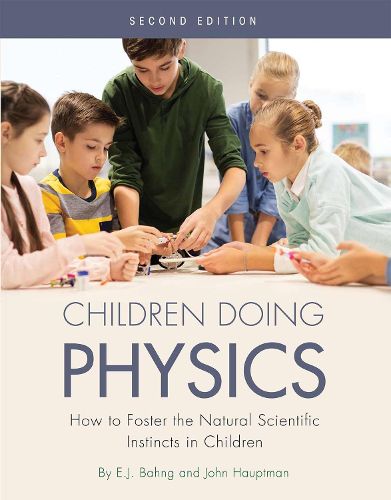Readings Newsletter
Become a Readings Member to make your shopping experience even easier.
Sign in or sign up for free!
You’re not far away from qualifying for FREE standard shipping within Australia
You’ve qualified for FREE standard shipping within Australia
The cart is loading…






Children Doing Physics: How to Foster the Natural Scientific Instincts in Children prepares future teachers to help children learn foundational concepts in physics. Activities and experiments within each chapter encourage teachers and children to tinker, build, model, articulate, and measure. The text helps educators develop confidence in conducting physics experiments in the classroom and enhances science content knowledge.
The text explores what scientists do, how students learn, and how to teach by participating directly in scientific inquiries. It employs a collaborative, practice-based, and reflective approach to pique interest and promote active learning. The book is aligned with the core ideas of physical sciences identified in the Next Generation Science Standards.
The second edition features expanded coverage on chemistry, includes a new chapter on fluids, updated discussions and explanations of key content, new appendices, and a glossary, discussion suggestions, and quizzes in each chapter.
Children Doing Physics is well suited for required physics courses for teachers. It is also a useful resource for classroom teachers or home schooling parents who want to incorporate physics instruction into their lessons.
$9.00 standard shipping within Australia
FREE standard shipping within Australia for orders over $100.00
Express & International shipping calculated at checkout
Children Doing Physics: How to Foster the Natural Scientific Instincts in Children prepares future teachers to help children learn foundational concepts in physics. Activities and experiments within each chapter encourage teachers and children to tinker, build, model, articulate, and measure. The text helps educators develop confidence in conducting physics experiments in the classroom and enhances science content knowledge.
The text explores what scientists do, how students learn, and how to teach by participating directly in scientific inquiries. It employs a collaborative, practice-based, and reflective approach to pique interest and promote active learning. The book is aligned with the core ideas of physical sciences identified in the Next Generation Science Standards.
The second edition features expanded coverage on chemistry, includes a new chapter on fluids, updated discussions and explanations of key content, new appendices, and a glossary, discussion suggestions, and quizzes in each chapter.
Children Doing Physics is well suited for required physics courses for teachers. It is also a useful resource for classroom teachers or home schooling parents who want to incorporate physics instruction into their lessons.